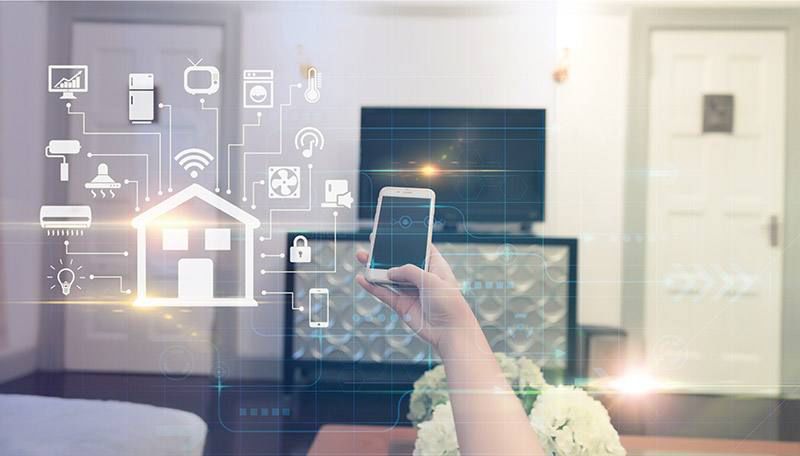

A while ago, a female reader complained to us about a minor issue. While dating her boyfriend, they had purchased some smart home appliances to keep up with the trend. During the setup, her boyfriend, wanting to showcase his “masculine strength,” bound all the devices to his phone for initialization. However, due to their unfamiliarity with the devices and the boyfriend’s lack of interest in household chores, they ended up using these smart home appliances as regular appliances.
After they broke up, the boyfriend moved out, and she continued to live peacefully for a while. It wasn’t until she contacted us that she accidentally discovered that these smart home devices were still linked to her ex-boyfriend’s phone. He could not only see through the app when she was cooking rice or using the vacuum robot, but if he wanted, he could also control her smart home devices. She found the process of unbinding and re-binding these devices to be quite cumbersome and would require contacting her ex-boyfriend again. The reason she reached out to us was that she didn’t want her ex-boyfriend to see the status of her home appliances, nor did she want to contact him.
From using smart home devices for flirting to
using smart home devices for domestic abuse, it only took us a year.
Initially, we thought this reader’s problem was just an isolated incident in the era of smart homes, but a recent news story has shown us that as smart home technology becomes more prevalent, our family and romantic relationships are also undergoing changes.
Recently, foreign media reported that smart home products are becoming new tools for domestic violence. The New York Times has reported over 30 times that victims have found their home water heaters and central air conditioning fluctuating in temperature, smart speakers suddenly blasting music, and sometimes even smart locks malfunctioning inexplicably. Only after some time did they realize they were experiencing “high-tech domestic violence.”

The Family Peace Center in Saint Raphael is a shelter for women harassed by domestic violence issues. Staff members have reported a sudden increase in women experiencing smart home domestic violence since last winter. Their commonality is that they live in relatively affluent conditions with many smart home devices, but they are almost completely unfamiliar with technology products, leaving their living environment entirely controlled by their partner’s smart home devices.
Considering examples around us and the general situation, smart home technology is having a significant impact on family relationships, particularly in terms of the concentration and transfer of power within the home.
In the past, control over household appliances was quite decentralized; whoever had the remote control could manage the devices. However, with smart home technology, the person who holds the control on their smartphone can remotely manage the appliances. Especially with devices like smart speakers that rely entirely on app control and voice commands, the installer may even have absolute control. Additionally, the use of smart home devices has a certain threshold, and many women are not very familiar with these products, which further concentrates control in the hands of men. Previously, artistic works often depicted scenarios where a husband would upset his wife, and she would retaliate by refusing to cook dinner. It seems that in the future, we might see a reversal where men use smart home technology to retaliate against their wives.

Last year, South Korea’s SK Telecom aired a promotional video for its smart home products, themed around how to tease the other party using smart home technology. The plot involved one partner in the bathroom while the other remotely operated the lights to flash frequently from the office, and when one was showering, the other suddenly lowered the water heater’s temperature.
This scenario could be understood as a playful interaction between couples, but a year later, it can also be interpreted as the seeds of domestic violence.
How to prevent smart home domestic violence? There are no solutions.
More frightening than the threat of smart home technology is that this threat currently cannot be resolved.
After numerous reports of smart home domestic violence incidents abroad, many smart home manufacturers claim they have not received any related complaints. When faced with the issues victims encounter, their advice is to turn off the WiFi and change the WiFi password to disconnect the devices from the internet.

Currently, smart home devices do not make unbinding and re-binding app accounts easy, as that would lower the difficulty for hackers to invade, and could even allow criminals to physically invade the home IoT system. For instance, most Xiaomi IoT devices can only be bound to one mobile account. The reason is likely that binding multiple accounts to the same product could lead to command conflicts.
At the same time, there are currently no laws or regulations globally that restrict the use of smart home technology. Whether adjusting light brightness, air conditioning temperature, or playing music on smart speakers constitutes domestic violence is still a matter of debate, as victims do not suffer physical harm from these actions. If it becomes unbearable, they can protect themselves by cutting off the internet or power.
Currently, there are projects in Silicon Valley addressing tech-related domestic violence. A project called WomenSV states that besides providing protection, psychological counseling, and support to victims, their primary focus is on raising social awareness and providing training on the use of technology products for victims.
Smart Home Breakup Guide
In this context, we have compiled a few simple “smart home breakup guidelines” for readers’ reference.
1. Try to purchase smart home products from reputable manufacturers.
Reputable manufacturers not only provide quality assurance but also have a comprehensive after-sales support system. If users experience harassment from smart home products, they can resolve issues through the after-sales system. Products from unknown manufacturers not only lack after-sales support but may also include features that infringe on user privacy. A few days ago, TechCrunch reported on a vacuum robot produced in Dongguan, China, which has surveillance capabilities and could turn into a monitor without the user’s knowledge.
2. Maintain awareness of the smart appliances purchased for the home.
Compared to previous casual purchases, the acquisition and installation of smart appliances almost determine the subsequent usage rights. The best approach is to have the homeowner install and bind the devices to avoid future issues. Be particularly cautious of smart products with cameras purchased by partners, especially pet monitors; reviews on popular products on Taobao reveal how many people have used these products as nanny monitors.
3. Regularly reset the home WiFi.
Currently, the only way to prevent others from arbitrarily controlling smart products at home is to stop the WiFi, forcing the devices to reconnect. Additionally, if there are female readers who do not require the smart products to be connected to the internet, the best approach is to disconnect them from the network.



